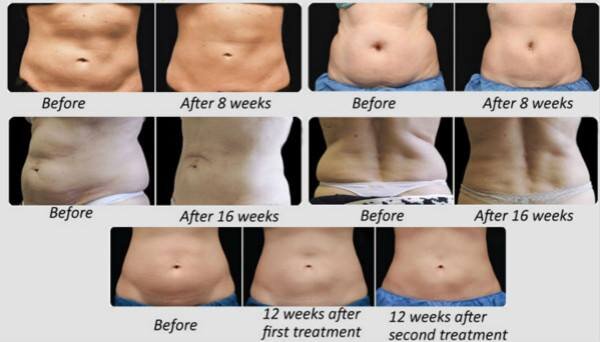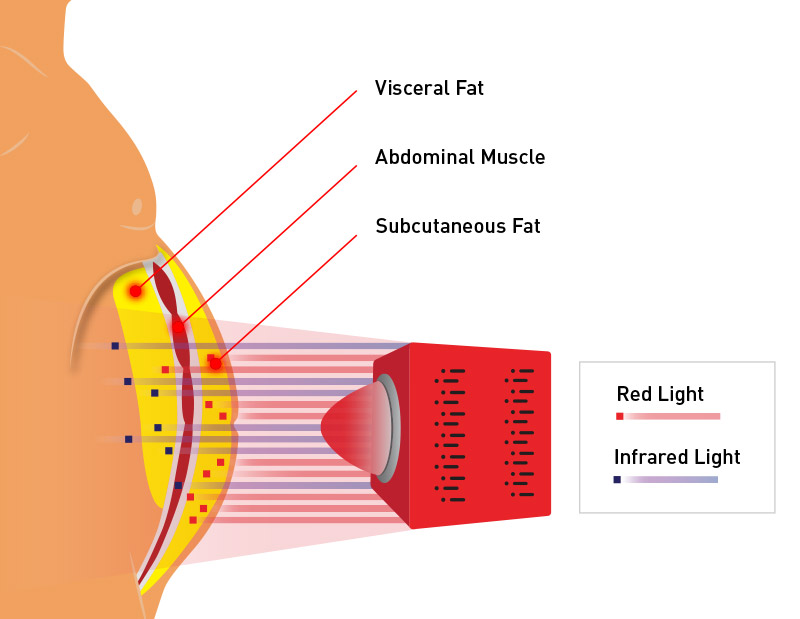Red Light Therapy for Weight Loss
Addtime:2025-06-10 Click:281

Can red light therapy help with weight loss?
Studies include a pilot study from 2020 involving 60 adults with overweight. The results showed a modest 0.8-inch (2 cm) reduction in waist circumference following twice-weekly LLLT treatments over 6 weeks. However, there was no control group to compare the results with.
Another study, from 2017Trusted Source, specifically targeted abdominal girth using a combination of three wavelengths of low-level laser, including red, infrared, and blue. The study involved 18 females who each underwent a total of 12 LLLT sessions during the course of the study.
The results showed significant reductions in upper, middle, and lower abdomen size, with all of the study participants experiencing positive results.
In 2018 Trusted Source, researchers looked into the potential benefits of LLLT with exercise training to reduce body fat. The study involved 49 females with obesity aged 20–40 years, divided into intervention and sham groups.
The participants underwent three sessions per week of exercise training with phototherapy after exercise for 4 months.
All participants experienced improvements. However, only those who received LLLT showed reduced interleukin-6, which is a marker of immune health, and increased WNT5 signaling, which is needed for the development of healthy cells.
This group also experienced bigger changes than the sham group in relation to:
- fat mass
- insulin
- HOMA-IR, which is a measure of insulin resistance
- FGF21, which regulates carbohydrate and fat metabolism

Researchers still need to work out the definitive mechanism of action behind LLLT. However, it might relate to the absorption of laser light into the adipocytes, which leads to increasedTrusted Source cyclic adenosine monophosphate production, a type of cell signal or messenger.
This then stimulates an enzyme called cytoplasmic lipase, which converts triglycerides to fatty acids and glycerol. These substances can pass through pores, causing the adipocytes to shrink.
Additionally, one animal study from 2018Trusted Source found that infrared photobiomodulation therapy, which is another name for LLLT, improved glucose metabolism and insulin regulation in the fat tissue of mice with obesity caused by a high fat diet.
Photobiomodulation has also been shown to increaseTrusted Source muscle mass gained after training.

Evidence-backed weight loss strategies
As the CDCTrusted Source explains, healthy weight management is about lifestyle rather than a specific diet or program. It is about establishing healthy eating patterns in combination with regular physical activity and stress management.
A review in NutrientsTrusted Source from 2020 reported that healthier alternatives to the Western diet tend to feature more plant-based foods, such as:
-
- fresh fruits and vegetables
- whole grains
- legumes
- seeds and nuts
These diets include the Mediterranean diet, the Dietary Approaches to Stop Hypertension (DASH) diet, and the Mediterranean-DASH Intervention for Neurodegenerative Delay (MIND) diet. They also tend to be lower in animal-based foods, especially fatty and processed meats.
Additionally, the American Association of Clinical Endocrinologists and the American College of Endocrinology recommend moderate-intensity aerobic exercise for at least 150 minutesTrusted Source per week for the medical care of people with obesity. They note better outcomes with increasing intensity and amounts of exercise.
There is also evidence that actively managing stress can help a person manage their weight. For instance, in one study from 2018Trusted Source, 45 adult participants received standard instructions for a healthy lifestyle.
Of these, 22 people in the intervention group also attended an 8-week stress management program. This involved breathing from the diaphragm, doing progressive muscle relaxation, doing guided visualization, and receiving instructions about healthy dietary habits.
The intervention group achieved a significantly greater reduction in BMI compared with the control group, with losses of 3.1 kilograms per square meter (kg/m2) in the intervention group compared with 1.74 kg/m2 in the control group.

Summary
A number of studies have found that red light therapy may help with weight loss. However, the study designs have been inconsistent and have not looked at long-term effects. So it is difficult to draw firm conclusions.
Some of the studies suggest that red light therapy could be a useful addition to following an exercise program or walking on a treadmill to lose weight. The procedure appears to be relatively safe if the device does not directly attach to the skin.
However, a person may also want to incorporate other evidence-backed weight loss strategies, including following a healthy dietary pattern, exercising, and managing stress.
